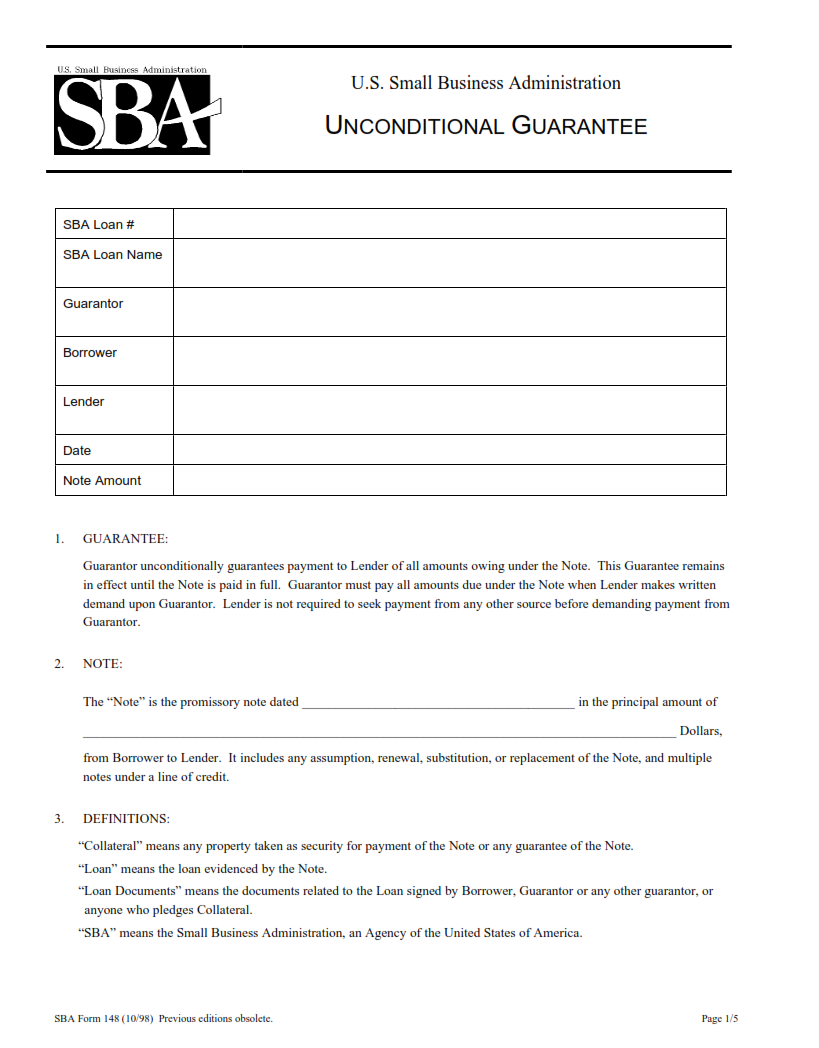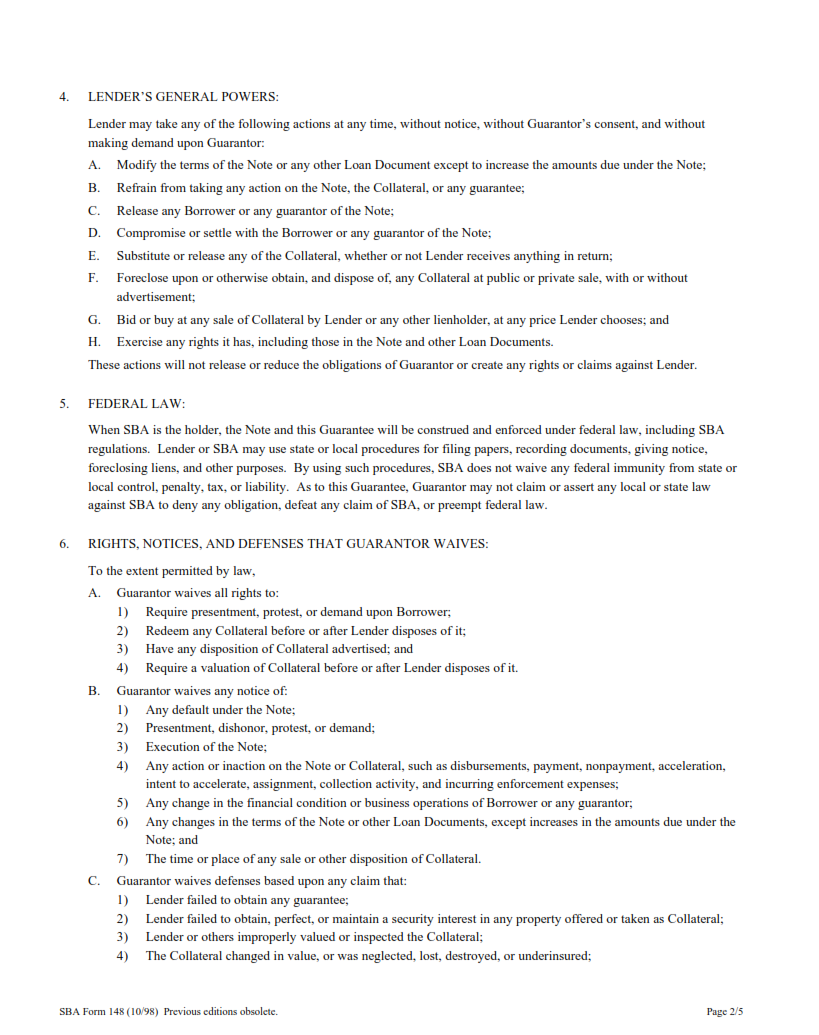ORIGINFORMSTUDIO.COM – SBA Form 148 – Unconditional Guarantee – The Small Business Administration (SBA) Form 148 is an Unconditional Guarantee form that small businesses can use to ensure they are able to receive financial backing when needed. This important document is necessary in order for the SBA to guarantee payment of a loan or other type of debt owed by the business. It acts as a binding agreement between the lender and debtor, making sure that both parties fulfill their obligations. The form includes terms and conditions related to repayment, guarantees, and general information about the applicant’s business.
Download SBA Form 148 – Unconditional Guarantee
| Form Number | SBA Form 148 |
| Form Title | Unconditional Guarantee |
| File Size | 27 KB |
| Form By | SBA Forms |
What is an SBA Form 148?
An SBA Form 148 is a form used by the Small Business Administration (SBA) to provide an unconditional guarantee for secured loan obligations. The purpose of this form is to protect lenders from any potential losses in case of default on a loan. With an SBA Form 148, the agency guarantees that, if a borrower defaults on their loan, the lender will be able to recover all or part of their losses.
In order to obtain the guaranteed funds from the SBA, lenders must submit an SBA Form 148 along with other required documents such as financial statements and credit reports. Once approved, borrowers are given access to loans with lower interest rates and longer repayment terms than they would otherwise qualify for without an SBA guarantee.
What is the Purpose of SBA Form 148?
The Small Business Administration (SBA) Form 148 is an Unconditional Guarantee. This form is required by the SBA when a loan or any other type of credit is requested from an SBA-approved lender. It guarantees that the borrower will be able to repay the debt regardless of any unforeseen changes in their financial situation. It also ensures that the lender can recover any losses if the borrower defaults on their loan payments.
The purpose of this form is for lenders to evaluate whether a loan applicant has sufficient resources and ability to meet their obligation and also serves as a legal document binding both parties in case of default. The goal of this form is to protect both borrowers and lenders alike, providing assurance that if something goes wrong, each party will be held accountable for their actions.
Where Can I Find an SBA Form 148?
The Small Business Administration (SBA) Form 148, also known as an Unconditional Guarantee, is a legal document used by lenders to guarantee payment of a loan or line of credit. It requires both the borrower and lender to sign the agreement in order for it to be legally binding. To obtain an SBA Form 148, borrowers must contact their local lending institution or visit the SBA website.
When visiting the SBA website, borrowers can find a variety of forms and documents related to small business loans and lines of credit. The SBA Form 148 is listed under “Guaranty Forms” on the main page. The form includes instructions on how to complete it correctly and links to other resources for additional information on loan guaranties.
SBA Form 148 – Unconditional Guarantee
The SBA Form 148 is an Unconditional Guarantee which serves as a formal contract between a Small Business Administration (SBA) lender and the borrower of an SBA loan. This form outlines the terms of the loan, including interest rates, repayment schedules, and other important details. It also states that if the borrower defaults on the loan, then the lender has a legal right to take possession of any collateral used to secure it. In addition, this form includes information about how both parties can resolve any disputes that arise in relation to the loan.
This document is especially helpful for borrowers who may not have excellent credit scores or sufficient financial resources to secure traditional financing from banks or other private lenders. By signing this agreement with an SBA-approved lender, borrowers are able to access much needed capital even if they don’t qualify for traditional financing options.
SBA Form 148 Example

